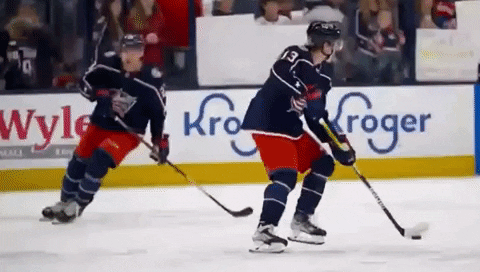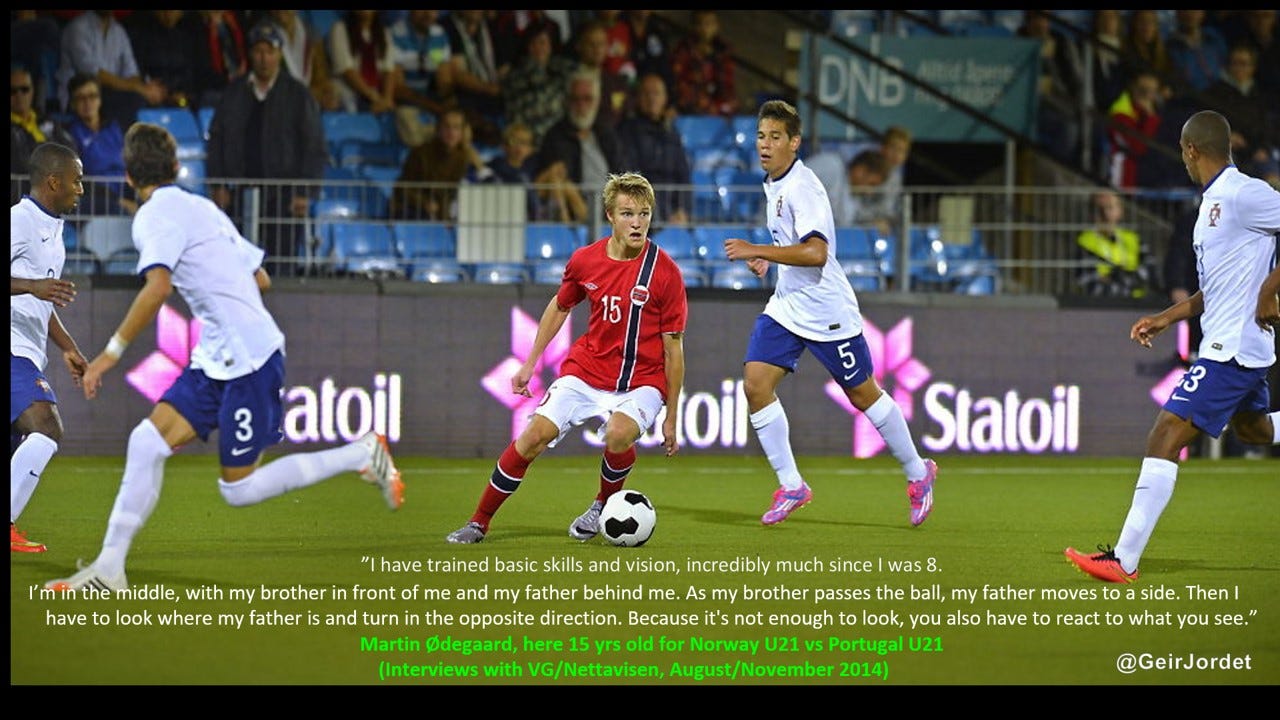We’ve talked about the importance of ice awareness being a foundational piece for slowing the perception of playing speed.
It’s an important topic, so we’re releasing a three-part series on the concept of scanning. Last up, how to train for scanning.
Training Scanning
Training Scanning
As far as we know, the soccer legend Xavi had the highest frequency across a game, at 0.83 scans/second.
“Think quickly, look for spaces. That’s what I do: look for spaces. All day. I’m always looking. All day, all day.” - Xavi (Source)
“It's like an obsession. When I entered this room, I analyzed how the chairs, the tables were placed. I always want to sit where I can see the whole room. It's a reflex, I always do that.” - Xavi, When interviewed and made aware of these numbers.
The most interesting finding for Xavi was that whenever he had not scanned before receiving the ball, he passed the ball back to the player who had passed it to him.
That is understanding the difference between a possession puck vs an attack puck!
Focus as a Youth Player
Frank Lampard was one of the best midfielders from 1995 to 2015. Check out this video of his scanning habit.
When told of Geir Jordet’s research results, Lampard claimed to be unaware of his scanning habit. Only when pressed did he recall that his father would repeat one word at him as a young player: “Pictures”
“In the first game Frank played for West Ham, his Dad (Frank Senior) would sit in the stands and shout at his son all the time. He would say the same things every time ‘Pictures! Pictures! Pictures!’ He wanted Frank to have a picture in his head before he got the ball. That was all. ‘Pictures!'” - Tony Carr (Head of West Ham youth academy)
Jordet found this story was a common theme among players that are considered great scanners/passers/readers of space.
"What I have come across a lot is that many of the players who are considered to be really good at it share the same story. They were told about it or discovered that it was important at a really early age and when you start early you have an advantage on others.” - Geir Jordet (Source)
Training/Practice Scanning
Like anything, scanning can be trained and improved. We should note that just because a player is scanning more doesn’t mean they will immediately be able to improve their perception and subsequent actions with the ball.
"It is quite easy to get players to double their scanning frequency. But it takes more time to actually take in that information, not just look but perceive what is happening, and ultimately to use it to guide your actions." - Geir Jordet
On the ice, a player’s scanning frequency is a great indicator of which players value ice awareness and will be able to see more things that are happening on the rink.
While activities such as game-based activities/small area games encourage scanning, this is not enough. Coaches, teammates, parents, etc. must encourage players to scan more often and gather information from those scans.
Similar to teaching children to look left and right before crossing the road, we can teach our players to scan before receiving a puck on the rink.
Make scanning a player’s habit by starting training early! Many elite players created their scanning habit at a very young age.
Hockey players should focus on this skill in practice. Before each puck touch, get in the habit of taking the initiative to look around and understand your surroundings. It won’t be easy: this requires extra effort and focus to avoid going through the motions within prescribed routes and solution drills. This is a massive reason why scanning must be a fundamental and oft-cited concept by the coaching staff.
Pre-Game Warm-Up
In a simple passing warmup, we see Son Heung-min of Tottenham in the English Premier League scanning before/after most ball-touches.
Below, see Blue Jackets top prospect Kent Johnson looking around before and during his puck touches in a warm-up setting.
Scanning & Puck Competency
One of the roadblocks scanning while in possession of the puck and a “heads up hockey” play style is puck competency.
Puck competency = ability to control the puck
Improving puck competency is a crucial pathway toward allowing players to scan while in possession of the puck.
Another trick of the trade is through skating routes and orienting the body so the player can ‘open up’ to the most amount of ice that holds valuable information.
Scanning vs Decision-Making
Arsene Wenger was the manager/head coach for Arsenal FC and is known for his ability to develop players while winning consistently. For him, there were two separate pieces: (1) scanning to gather information and (2) decision-making quality.
Scanning to gather information
Scanning is a foundational piece of a player’s decision-making process:
“It is about getting as much information as possible before I get the ball. I call that scanning, I try to see what happens to a player in the 10 seconds before he gets the ball, how many times does he take information, and the quality of information he takes.” - Arsene Wenger
Decision-making quality
How a player interprets the information they have collected:
“You have to analyze the quality of a player’s perception, and decision-making.
My challenge is to get my players to know which the best choice is and make the optimal decision every time they get the ball. The player has to scan and decide, when he decided he has to make the best possible solution.” - Arsene Wenger
Scan and decide. Then it’s all down to if a player is able to execute.
This is why the best question in hockey is, “What did you see?”
Scanning within Scouting
Scanning is a valuable habit/skill to teach and learn for players of all ages.
It’s a highly transferable skill that has many benefits. It’s a habit that I look for when scouting and working with players. This is something that I know elite-level scouts and coaches look for from players as well.
The number of times a player scans gives an indication of their potential.
“Some youth academies worry about winning, we worry about education, you see a kid who lifts his head up, who plays the pass first time, hmmm, and you think, ‘Yep, he’ll do.’ Bring him in, coach him.” - Dutch soccer legend Johan Cruyff
Further Reading
Did you enjoy this newsletter?
Help us spread the ideas within and share it with the people you care about





